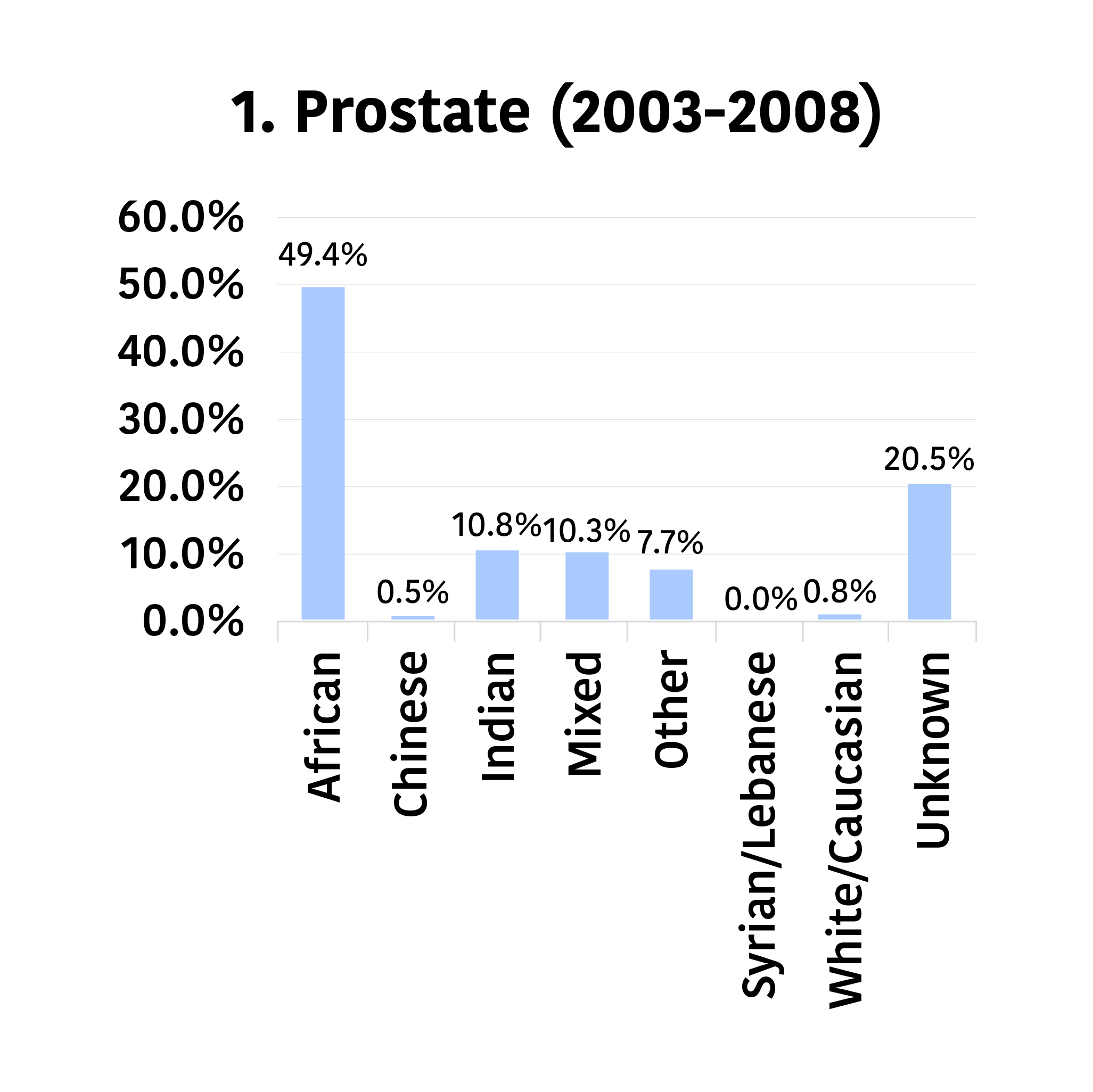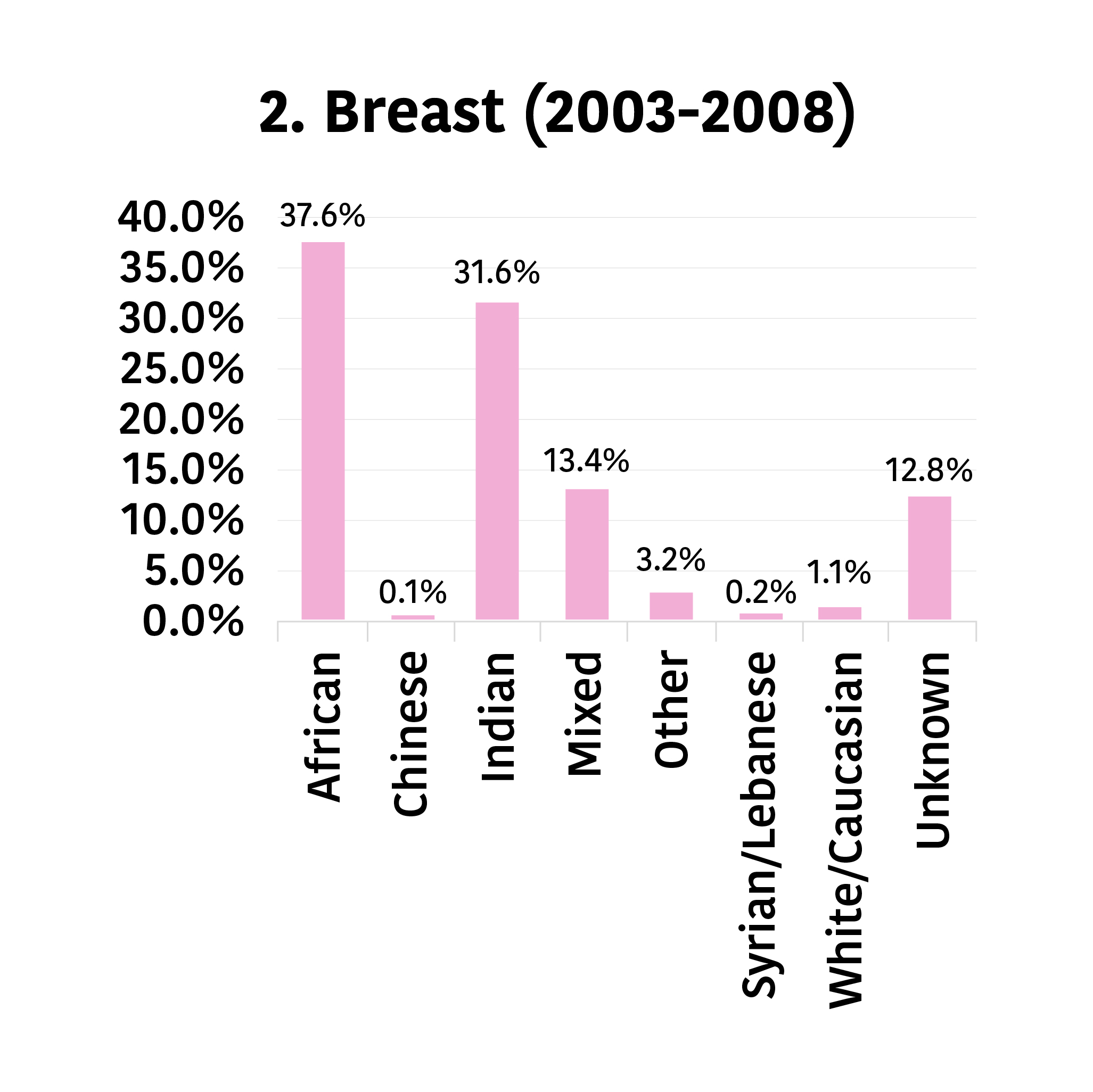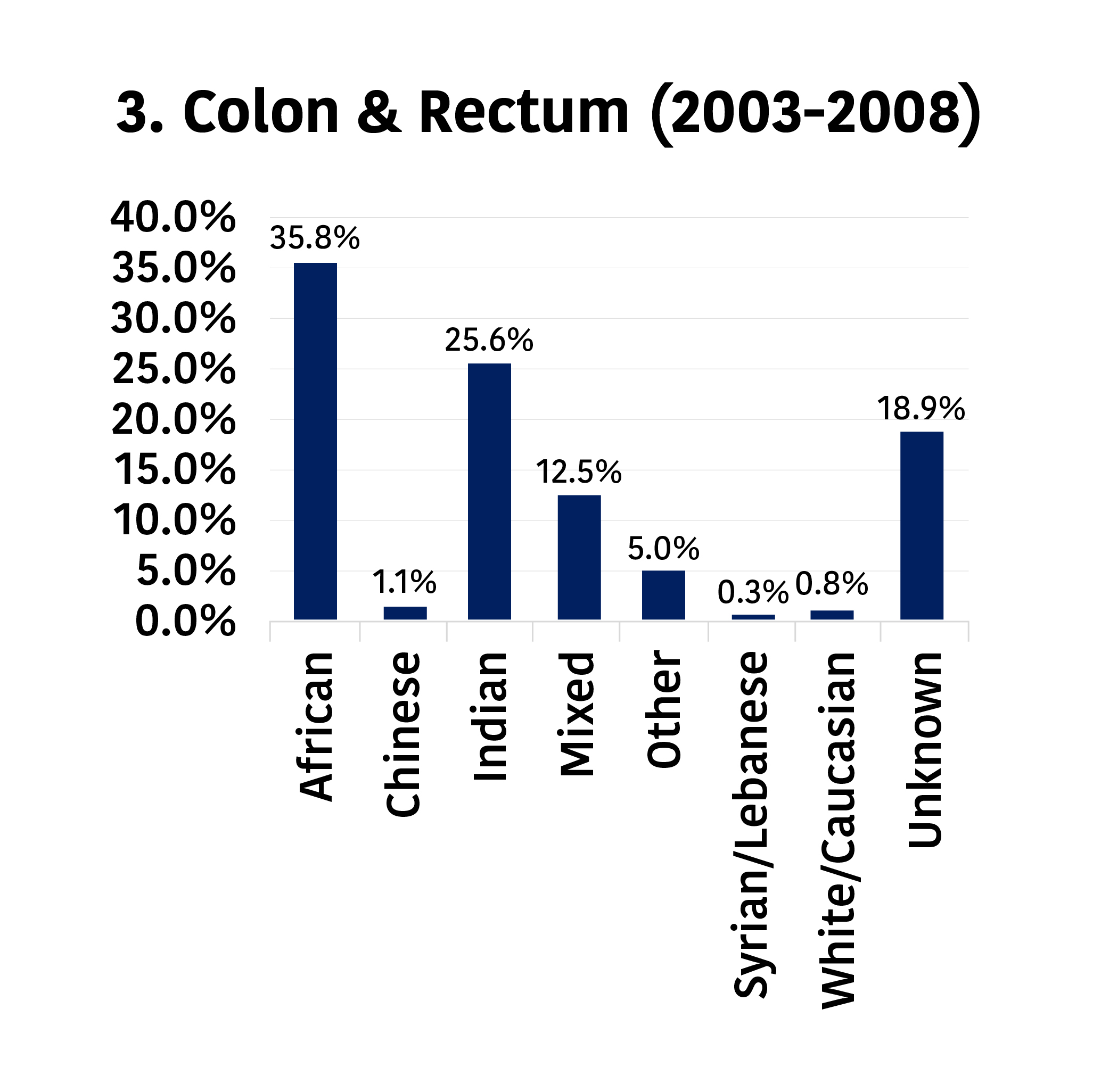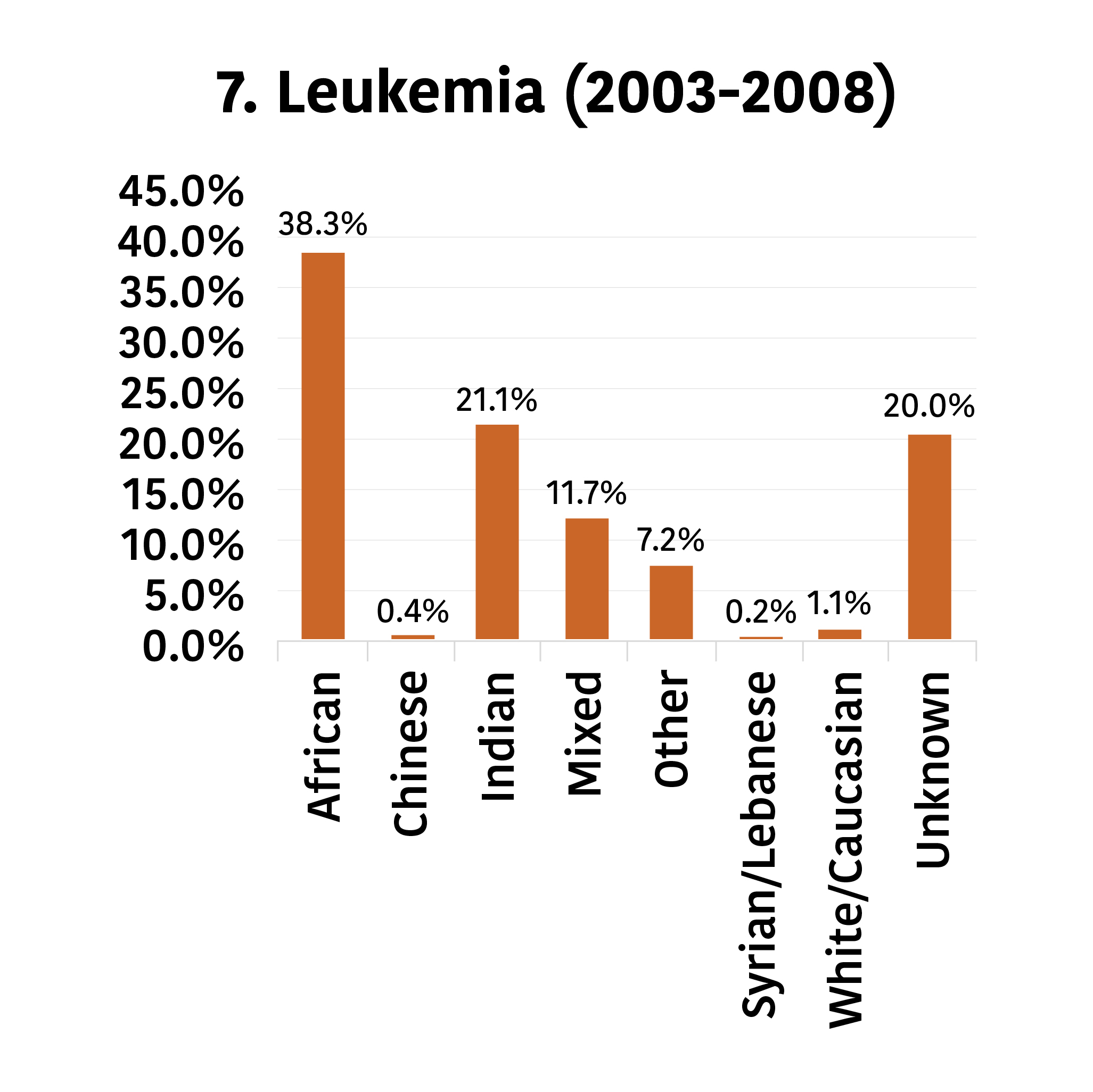Top 5 Leading Cancers, 2003–2008
TOP 5 CANCERS OVERALL
Prostate cancer
was the top cancer by percentage of total (n=2,688, 20.6%), followed by
breast
(n =2,220, 17.0%),
colon and rectum (n=1,432, 11.0%),
bronchus and lung (n=806, 6.2%),
and cervix uteri (n=736, 5.6%).
Figure 5.1:
Top 5 Cancers Overall, 2003 to 2008
TOP 5 CANCERS BY AGE GROUP
There were:
- 152 persons diagnosed with cancer within the age group 0 to 14 years;
- 138 persons in the age group 15 to 24 years;
- 4,914 persons in the age group 25 to 59 years;
- 4,571 persons in the age group 60 to 74 years; and
- 3,228 persons aged 75 years and over.
-
 Leukemia had the highest incidence among individuals under 15 years.
Leukemia had the highest incidence among individuals under 15 years.
-
 Lymphoma had the highest rate in the 15 to 24 age group.
Lymphoma had the highest rate in the 15 to 24 age group.
-
 Breast cancer had the highest incidence among those aged 25 to 59.
Breast cancer had the highest incidence among those aged 25 to 59.
-
 Prostate cancer was highest among individuals 60 years and older.
Prostate cancer was highest among individuals 60 years and older.

Top 10 Leading Cancers, 2003–2008
With 2,688 registered cases and 1,319 deaths,
prostate cancer
was the leading cancer overall (20.6%) and among men (40.7%).
Incidence rate: 69 cases; Mortality rate: 34 deaths per 100,000 men
With 2,182 registered cases and 598 deaths,
breast cancer
was the second-leading cancer overall (17.0%) and the leading cancer among women (33.9%).
Incidence rate: 56 cases; Mortality rate: 15 deaths per 100,000 individuals
Figure 5.2:
Lifetime Risk of Leading Cancers, 2003 to 2008
Age-Sex-Specific Incidence Rates of
Top 5 Leading Cancers, 2003–2008
Figure 5.3:
Age-Specific Incidence Rates of the Top 5 Leading Cancers in Males for the Period 2003 to 2008
Figure 5.4:
Age-Specific Incidence Rates of the Top 5 Leading Cancers in Males for the Period 2003 to 2008
Top 8 Leading Cancers by Ethnicity, 2003–2008
The percentages indicate the proportion of ethnicity within a particular cancer.
×
![Popup Image]()







